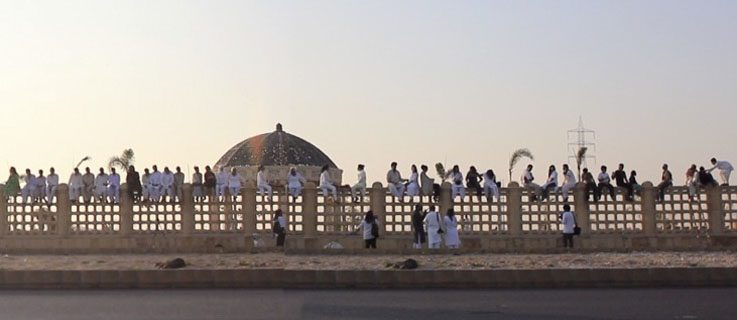Major cities are cultural contact zones and transit spaces, places of uncertainty and the foreign. The dynamism of change arising from this constitutes the essence of urbanity and is what lends metropolises their stability and attractiveness in the first place. Together with the Chair of Urban Design and Regional Planning of the Technical University Munich and in cooperation with the Munich Kammerspiele, the Goethe-Institut highlighted the theme of the city and migration in a colloquium and public panel discussion with international experts. The goal here was to provide an international perspective on the issue of flight and migration to enrich the discussion with examples from abroad and thereby to make a productive contribution to a current hot-button issue. Urban planner and department chair Sophie Wolfrum summarises the results and perspectives in an interview.
Frau Wolfrum, urban history is always also a history of migration. How did cities arise, what actually defines a city?
Historically, cities have arisen in places where surpluses existed in agricultural societies. Here, therefore one had the option of making a living without producing food oneself. The city is in this respect a cultural achievement. Moreover, cities developed in places where trade routes intersected or “the ruler” received visitors. So the city was always a place where a settled population encountered strangers. The city as a place where strangers can live together is a classical definition of urban sociology.
What does it mean for our cities today that foreignness is part and parcel of urban life?
The definition that foreignness is a part of the urban social fabric is valid primarily as a general statement. It simply means that in a city one doesn’t know everyone the way one does in the classical, ideal case of the village. In the city one sends one’s children to school so that they get a good education, but one doesn’t know the teacher personally. One takes a seat in a bus in the confidence that the bus driver can drive properly, although one doesn’t know him either. Confidence in the stranger that he is a part of the society and acts reliably without one’s having a personal relationship with him is a fundamental dimension of urban life.
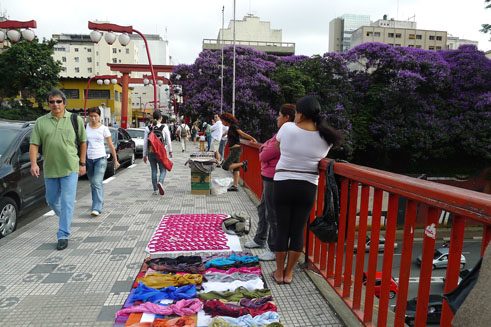 São Paulo
| Photo: Sophie Wolfrum
Is this confidence in one’s fellow citizens, even though they are strangers, what makes the city an engine of tolerance?
São Paulo
| Photo: Sophie Wolfrum
Is this confidence in one’s fellow citizens, even though they are strangers, what makes the city an engine of tolerance?
Confidence is one aspect. But the coexistence of many people in a city also necessitates tolerance of density and tight limits, the way one puts up with crowding and jostling in the tube. The plus point is that many people can live together, or next to each other. To me it is a challenge to live this urban tolerance, which is also based on indifference, and at the same time to create a caring society based on trust.
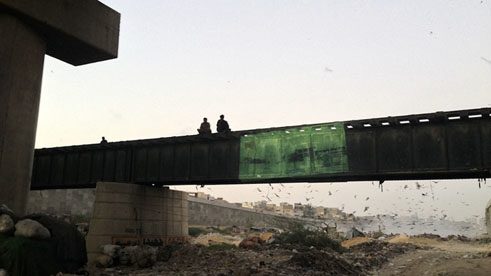 Karachi
| Photo: Tentative Collective
Does this caring society also work when different cultural groups encounter each other in a city?
Karachi
| Photo: Tentative Collective
Does this caring society also work when different cultural groups encounter each other in a city?
These modes of urban conduct also make it possible for strangers from other cultural groups to enter into an urban society of this kind. The “other” can have a different religion, wear different clothes, have different customs – all this is initially a matter of indifference to the city dweller. The advantage here is that not every case of “otherness” instantly turns into a conflict, but also leads to disinterest and a certain social coldness. After all, a caring society requires that one care. This is the contradiction in which we move today. Backgrounds in various different cultural groups can possibly impede one’s sense of responsibility for the other.
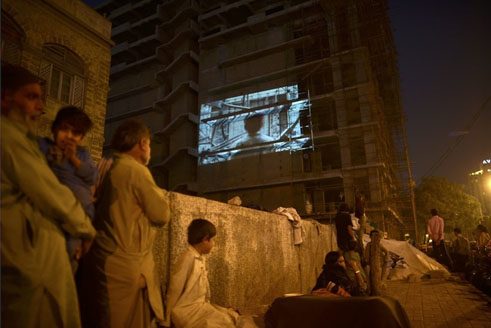 Karachi
| Photo: Tentative Collective
How must an urban society be organised so as to be able to sustain this, to live this solidarity?
Karachi
| Photo: Tentative Collective
How must an urban society be organised so as to be able to sustain this, to live this solidarity?
In each city there are different cultures of accepting, sheltering, acclimating, rejecting, integrating and including migrants. The colloquium studied these various perspectives with experts from Karachi, Paris, São Paolo, Shenzen and Munich. Shenzen, a city that 25 years ago had 100,000 inhabitants, now has 18 million; this was among other things a planned development on the part of the central government of China. The city has grown on account of migration by the rural population. This is often bound up with extreme social hardship.
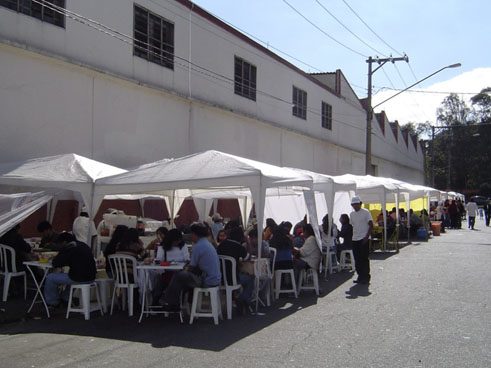 São Paulo
| Photo: Renato Cembalisto
Settlement in the Urban Villages in the Pearl River Delta works only because here, immigration is permitted in a completely unregulated fashion. In São Paolo the favelas have absorbed migrants from the countryside, the social welfare state has failed completely here. People have on the one hand the possibility of integrating themselves into urban society over generations through property ownership, but on the other hand are marginalised by the identifiable, visible structure of a favela. Karachi, which has grown into a city of 24 million through various waves of immigration due to the political upheavals of the subcontinent, is described as the world’s most dangerous city – but there too, of course, a daily life does exist.
São Paulo
| Photo: Renato Cembalisto
Settlement in the Urban Villages in the Pearl River Delta works only because here, immigration is permitted in a completely unregulated fashion. In São Paolo the favelas have absorbed migrants from the countryside, the social welfare state has failed completely here. People have on the one hand the possibility of integrating themselves into urban society over generations through property ownership, but on the other hand are marginalised by the identifiable, visible structure of a favela. Karachi, which has grown into a city of 24 million through various waves of immigration due to the political upheavals of the subcontinent, is described as the world’s most dangerous city – but there too, of course, a daily life does exist.
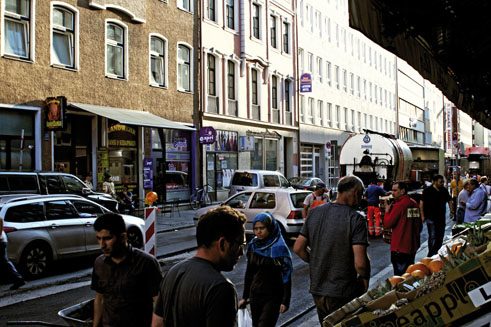 Munich, station quarter
| Photo: Markus Weinig
Each city faces different challenges in the global process of migrations. Are there notwithstanding common perspectives, preconditions or institutions that facilitate a caring and tolerant urban society?
Munich, station quarter
| Photo: Markus Weinig
Each city faces different challenges in the global process of migrations. Are there notwithstanding common perspectives, preconditions or institutions that facilitate a caring and tolerant urban society?
Here in Munich the policy of social integration is very successful. Munich has the highest proportion of migrants among major German cities, every third Munich resident has foreign roots. The programme of socially just land use has governed Munich’s housing construction policy and thereby the city’s capacity for integration at the same time. With the model of the Munich Mix, it secures a 30-percent share of subsidised social housing in each city district, and thereby prevents the emergence of ghettos and social flashpoints. This clearly shows that policy-making is what is crucial here, the architecture comes second.
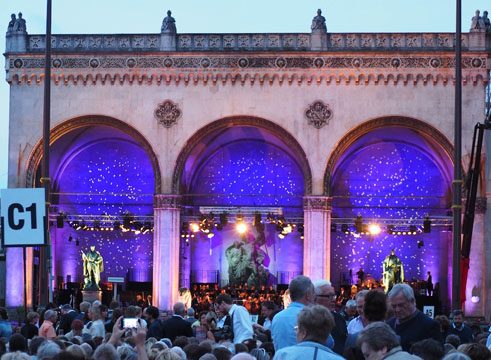 Munich, public screening
| Photo: Regina Prinz
Of course, it is also important that the basic conditions for living and working are available. At the same time, above all public institutions, cultural offerings and events provide the necessary interfaces where different people of a city can come together. Libraries, for instance, community centres and sports areas, also parks, markets and beer gardens, or events like public viewing and open air concerts – places that are accessible to the public and can be used by everyone.
Munich, public screening
| Photo: Regina Prinz
Of course, it is also important that the basic conditions for living and working are available. At the same time, above all public institutions, cultural offerings and events provide the necessary interfaces where different people of a city can come together. Libraries, for instance, community centres and sports areas, also parks, markets and beer gardens, or events like public viewing and open air concerts – places that are accessible to the public and can be used by everyone.
If a city offers a wide range of interfaces of this kind, rejection or even fear of a different culture is reduced. In this way, a tolerant and caring society can emerge and foreignness is turned into an enrichment for the city.
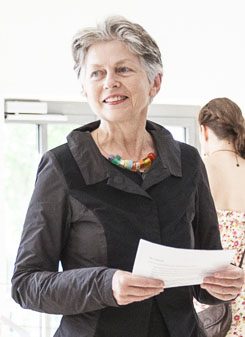 Sophie Wolfrum
| Photo: Matthias Kestel
Sophie Wolfrum
Sophie Wolfrum
| Photo: Matthias Kestel
Sophie Wolfrum studied spatial planning at the University of Dortmund, completed the civil service examination of the State of Hesse in urban development, and in 1989, following administrative practice in Tansania and Germany, founded the Büro für Architektur und Stadtplanung (i.e. agency for architecture and urban planning) in partnership with Alban Janson. Projects of the agency have been distinguished with numerous awards, including the German Urban Construction Prize /Deutscher Städtebaupreis for 1995 and 2006. She is Professor of Urban Development and Regional Planning at the Technical University since 2003, and from 2011-2014 she was dean of the Department of Architecture. Most recent publication: Wolfrum, Sophie and Janson, Alban: Architektur der Stadt (i.e. architecture of the city), Kraemer Verlag, Stuttgart 2016.
